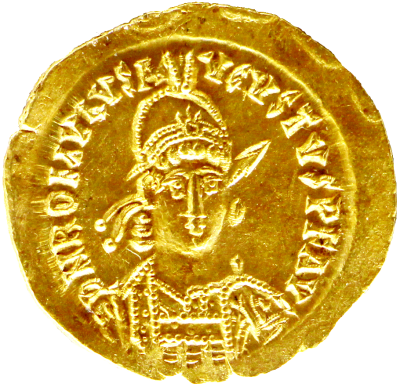The fall of the Western Roman Empire (also called the fall of the Roman Empire or the fall of Rome) was the loss of central political control in the Western Roman Empire, a process in which the Empire failed to enforce its rule, and its vast territory was divided into several successor polities. The Roman Empire lost the strengths that had allowed it to exercise effective control over its Western provinces; modern historians posit factors including the effectiveness and numbers of the army, the health and numbers of the Roman population, the strength of the economy, the competence of the emperors, the internal struggles for power, the religious changes of the period, and the efficiency of the civil administration. Increasing pressure from invading barbarians outside Roman culture also contributed greatly to the collapse. Climatic changes and both endemic and epidemic disease drove many of these immediate factors. The reasons for the collapse are major subjects of the historiography of the ancient world and they inform much modern discourse on state failure.In 376, unmanageable numbers of Goths and other non-Roman people, fleeing from the Huns, entered the Empire. In 395, after winning two destructive civil wars, Theodosius I died, leaving a collapsing field army, and the Empire, still plagued by Goths, divided between the warring ministers of his two incapable sons. Further barbarian groups crossed the Rhine and other frontiers and, like the Goths, were not exterminated, expelled or subjugated. The armed forces of the Western Empire became few and ineffective, and despite brief recoveries under able leaders, central rule was never effectively consolidated.
By 476, the position of Western Roman Emperor wielded negligible military, political, or financial power, and had no effective control over the scattered Western domains that could still be described as Roman. Barbarian kingdoms had established their own power in much of the area of the Western Empire. In 476, the Germanic barbarian king Odoacer deposed the last emperor of the Western Roman Empire in Italy, Romulus Augustulus, and the Senate sent the imperial insignia to the Eastern Roman Emperor Flavius Zeno.
While its legitimacy lasted for centuries longer and its cultural influence remains today, the Western Empire never had the strength to rise again. The Eastern Roman, or Byzantine Empire survived, and although lessened in strength, remained for centuries an effective power of the Eastern Mediterranean.
While the loss of political unity and military control is universally acknowledged, the Fall is not the only unifying concept for these events; the period described as late antiquity emphasizes the cultural continuities throughout and beyond the political collapse.
Romulus Augustus (c. 465 – after 511?), nicknamed Augustulus, was Roman emperor of the West from 31 October 475 until 4 September 476. Romulus was placed on the imperial throne by his father, the magister militum Orestes, and, at that time, still a minor, was little more than a figurehead for his father. After Romulus ruled for just ten months, the barbarian general Odoacer defeated and killed Orestes and deposed Romulus. As Odoacer did not proclaim any successor, Romulus is typically regarded as the last Western Roman emperor, his deposition marking the end of the Western Roman Empire as a political entity. The deposition of Romulus Augustulus is also sometimes used by historians to mark the transition from antiquity to the medieval period.
Very few records survive of Romulus' reign. There are no known policies, laws or inscriptions of significance of the emperor, which leaves the impression that he was a shadowy and relatively inconsequential figure. The nickname 'Augustulus' means "little Augustus" and was a derisive nickname referencing his young age. Romulus' immediate family, including his father and possibly his mother, and maybe both his paternal and maternal grandparents, were from the Roman province of Pannonia, and many of his family members had military backgrounds.
Romulus came to power through usurpation of his predecessor, Julius Nepos (r. 474–475 in Italy) in 475. Nepos fled to Dalmatia and continued to claim the imperial title in exile, which hampered Romulus' legitimacy and ensured that he was never recognised by the eastern Roman emperor Zeno. In 476, the barbarian foederati (ally troops) in Italy demanded Italian lands to settle on, which was refused by Orestes. Under their leader Odoacer, the foederati defeated and killed Orestes and deposed Romulus, whereafter Odoacer became the first king of Italy and accepted emperor Zeno as his nominal suzerain.
Romulus's life was spared by Odoacer, and he was allowed to retire to the castellum Lucullanum, a great fortress in Campania, located in Naples. Little certain information is known concerning Romulus's life in exile. He might have played a role in founding a monastery at castellum Lucullanum in the 480s or 490s, dedicated to Saint Severinus of Noricum. Romulus could have been alive as late as 507 or 511 when Theodoric the Great, Odoacer's successor, wrote a letter to a "Romulus" concerning a pension. Romulus was likely dead before the mid-530s, as accounts of the eastern Roman invasion of Italy at that time do not mention him.

 English
English  español
español  français
français  português
português  русский
русский  العربية
العربية  简体中文
简体中文 
